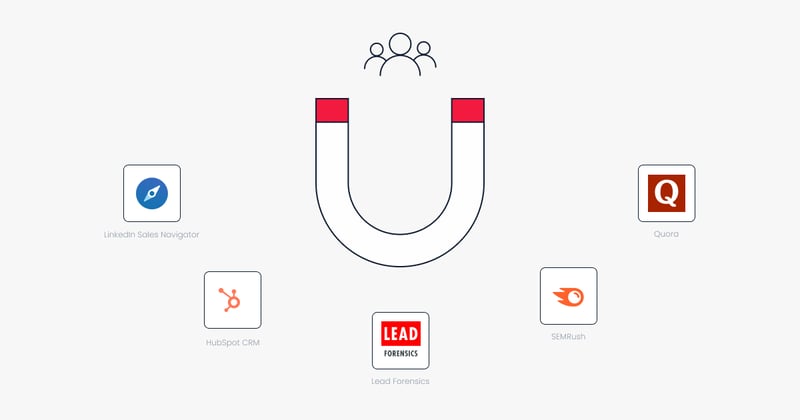Marketing to businesses can be tricky. But overcoming the hurdles you’ll face isn’t impossible, as long as you’re equipped with the right resources and are willing to make an effort. Here are some common barriers that businesses encounter, along with tips on how to overcome them successfully.
Common B2B Marketing Barriers
The good news is, if you’re struggling with one of these marketing hurdles, you aren’t alone. The bad news? You have a lot of company. In any case, it doesn’t help to know that your struggles are common – what helps is knowing how to overcome them. Check out these three strategies for overcoming three common barriers to success in business-to-business marketing: 1) a lack of qualified leads; 2) a lack of consistency across sales and marketing efforts; and 3) insufficient knowledge about your target market. Let’s get started!
Lack of Qualified Leads
If your target market isn’t aware of your business or if they don’t know how you can help them, they aren’t going to buy from you. How do you get in front of people? Word-of-mouth is an effective way, but it takes time. A good way is by being present at events where your target market congregates. This could be through networking or advertising through online channels. Whatever strategy you choose, always remember that what goes into lead generation—and nurturing—must also come out of lead generation. If you spend months building a network but never reach out to those contacts, you won’t have much success when it comes time for sales meetings and closing deals. Lead generation requires consistent action on your part, not just one-off campaigns. Do not start down a marketing plan unless you intend to see it through; otherwise, all your efforts will be wasted. Many marketers blow their entire budget during their first campaign because they believe that money spent up front means greater returns later—but there’s no guarantee of return without constant communication, education, relationship-building and quality messaging throughout each phase. Start small if you must to prove your idea worthiness before investing further, but once you understand what works and you have done sufficient market research, double down on consistent communication so leads are engaged over time before needing to close deals. Don't chase tactics - invest in strategies instead.
Lack of Consistency Across Sales & Marketing Efforts
When marketing and sales aren’t on exactly the same page, it’s hard for either department to hit its goals. It also hampers efforts by your team members who spend time trying to figure out how everything fits together. For example, if marketing gets leads but fails to nurture them or provide consistent messaging, then sales isn’t going to be able meet revenue goals. When each group has one eye on its own ball, neither is focused on winning together. What helps is having a single person (or team) coordinate all of your sales and marketing activities so everyone can focus on beating targets without stepping on one another’s toes. That way there are fewer bumps along the road. In fact, coordinating these two groups will increase your chances of hitting your company’s targets by 85%. Don’t let frustration over missed sales opportunities get in your way; instead do something about it! Harnessing creativity in these departments doesn't have to compromise quality; you don't need separate budgets to create outstanding content that moves people toward purchasing products or services. All you need is someone who understands both departments well enough that they can bridge communication gaps between departments and think outside traditional marketing boxes while meeting business objectives. This type of multi-talented person doesn't exist? Put one there - right now! Otherwise, count on missing key indicators or indicators completely because management's insistence on separating teams hinders collaboration.
Insufficient Knowledge About Your Target Market
One of your goals as a marketer is to learn as much as you can about your customers, both individually and en masse. How else will you know how best to position your products and services? The more knowledge you have at your disposal, the better equipped you’ll be for creating strategies that move customers through their buying cycle. Keeping tabs on these trends will help ensure that you don’t waste precious time or resources on strategies that aren’t converting. And if you think about it, every hour spent learning about today’s buyer is one less hour wasted doing something ill-informed tomorrow. Because no matter what type of product or service you sell, there are always new trends emerging—and plenty of room to master them. If you run out of things to learn about your industry, make sure you explore related markets where there are likely new discoveries waiting around every corner. To sustainably grow your business, challenge yourself each day with an educational assignment—no matter how small—about what makes customers tick in either existing or new markets. Challenge yourself with just one additional piece of information that day by expanding your knowledge base just slightly beyond yesterday's footprint. Sure, you might not use everything you learned ever again; but chances are good that within six months (or even sooner), you'll find a way to apply some of it.
Overcoming The Barriers
Thinking creatively about how you sell and market your business is essential. There’s no one size fits all solution for marketing, so think of your existing audience and look for creative new ways to reach them. As long as you’re providing value in some way and appealing to a real need of your target audience, you should be able to develop a marketing strategy that helps drive more sales and revenue than ever before. A great place to start is by identifying these common barriers and others in your industry and coming up with creative ways around them, while also considering any unique features or advantages that set you apart from other businesses. Keep an open mind, explore different marketing channels like social media or radio advertising, find what works best for your business model, and keep track of key metrics like conversions. Then build on those strategies until they become routine; until then, stay nimble enough to adapt to whatever happens next. If you need some advice on overcoming barriers you may have encountered, get in touch with us here at GrabSome!














